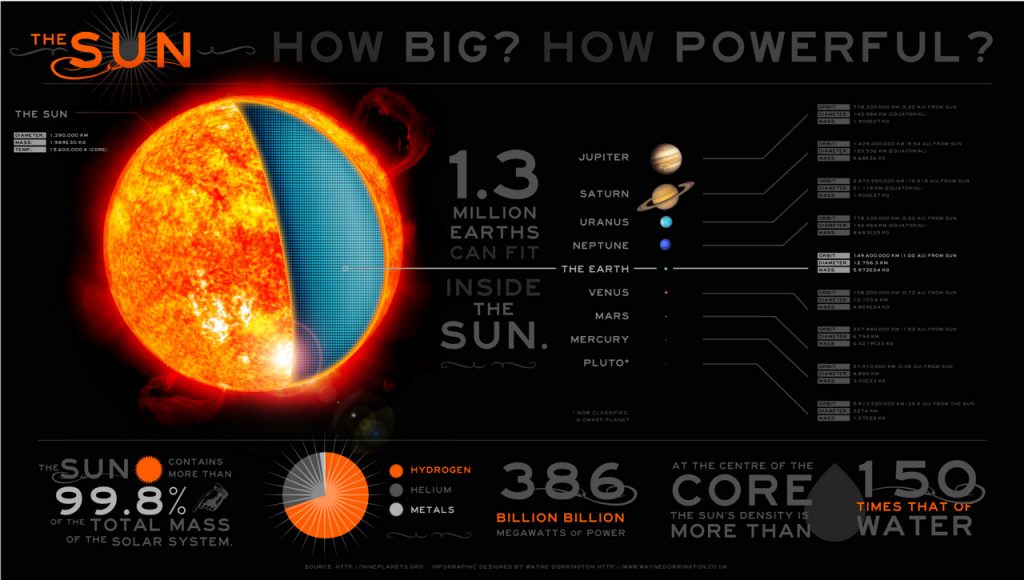- The Earth orbits the sun at a speed of about 18.4 miles per second or about 66,600 mph.
- The energy required to stop the Earth orbiting the sun then is about 2.6478 × 1033 joules or 7.3551 × 1029 watt hours or 6.3285*1017 megatons of TNT. For reference, the largest nuclear explosion ever detonated (the Tsar Bomba by the Soviet Union) “only” produced 50 megatons of TNT worth of energy. So it would take about 12,657,000,000,000,000 of those nuclear bombs detonated at the correct location to stop the Earth from orbiting the sun.
- Along with orbiting around the sun at 66,600 mph, the Earth is also rotating at its axis at about 1,070 miles per hour. So you are simultaneously hurtling around the sun at 66,600 mph while sitting on a rock that is spinning at 1,070 mph. On top of that, our whole solar system is rocketing through space around the center of the Milky Way at around 559,234 mph. On top of that, our galaxy is hurtling through space at around 671,080 mph, with respect to our local group of galaxies. On top of that, for all we know, our entire Universe is hurtling through some unknown medium at some other ridiculous speed.
- It takes approximately 225 million Earth years for our solar system to make one trip around the Milky Way.
- The Earth is about 28,000 light years from the center of the Milky Way, on the outer rim. Most all the mass in the Milky Way is much closer in than we are; this is good because, if the density was the same out here as it is closer to the center, the increase in cosmic radiation would kill us all.
- All planets in our solar system travel around the sun in elliptical orbits. The distance to the sun for the Earth varies by about 1.7%. We are closest to the sun in January (perihelion) at about 91.1 million miles (146.6 million km). We are furthest from the sun in July (aphelion) at around 94.8 million miles (152.6 million kilometers). The average distance from the sun to the Earth is known as 1 Astronomical Unit, (1 AU or about 93 million miles).
- Summers in the Northern Hemisphere last 2 to 3 days longer than summers in the Southern Hemisphere. The reason why is that the Earth moves more slowly at aphelion than at perihelion.
- The average temperature of the Earth year round is around 61°F (16.1°C). The average coldest temperature on the Earth, in Antarctica, is around -60°F or -51.1°C and the average of the hottest part of the Earth, in the Sahara Desert, is around 130°F (54.4°C).
- The hottest temperature ever recorded on Earth was 136°F (57.77 °C) in El Azizia, Libya on the edge of the Sahara Desert. The second hottest, 134°F (56.6°C), was recorded in Death Valley, California in the Mojave Desert way back in 1913.
- The coldest temperature on the Earth was recorded at Vostok, Antarctica on July 31, 1983 at -128.6°F (-89.22°C).

GPT
Claude 3 Haiku
Here is some additional content building on the blog post about the power of perihelion: The Perihelion Effect: A Shift in Consciousness The perihelion, the



